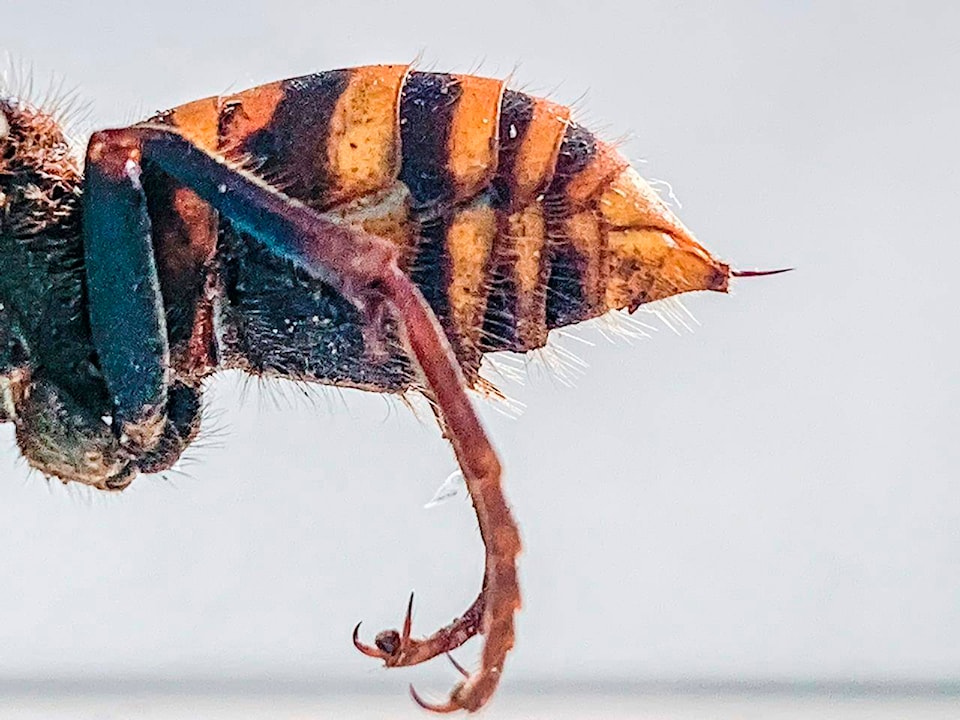Central Albertans looking over their shoulder for a hornet the size of a double A battery — nicknamed murder hornets — can relax.
Todd Nivens, executive director of the Waskasoo Environmental Education Society, said the huge flying insect, with a black and yellow face that resembles a Spider-Man mask, will be really easy to spot should they somehow make it east of the Rockies.
“The fact that they are gigantic. The fact that they look like they were drawn by a comic book artist, and the fact we do have a pretty good line of defence in our amateur beekeepers and our professional beekeepers — with all of those things lined up, I think we have a pretty good chance of dealing with them if and when they come here. That’s assuming they do come here,” Nivens said.
A few Asian giant hornets, the world’s biggest hornet, were found last fall in Washington state and British Columbia.
Known for preying on honey bees and tearing off their heads, to feed to their young, the hornets are starting to emerge from winter hibernation.
“Within their realm, they’re the biggest, baddest, most interesting thing around, so they have grabbed people’s attention. They have a hunting and feeding pattern that comes straight out of a horror movie.”
Word of the hornets also happens to be spreading during a pandemic, when the public is already “a little twitchy about other things,” Nivens said.
He said a couple dozen human deaths related to the hornets are reported each year in Asia, but that’s across an entire continent, with a couple of billion people, and where the hornets are native and established.
Only a few were reported in B.C., and most were immediately addressed, so the public should not be worried, said Nivens.
Related:
‘Murder Hornets,’ with sting that can kill, land in US
Research shows climate change silencing spots once buzzing with bees
Central Alberta’s robust community of urban and commercial beekeepers will surely be on the lookout, and any hive would be found fairly quickly, he said.
“We’re talking about an invasive species that if left unchecked, could have the potential to wipe out the honey bee population. That’s what we should be worried about. Honey bees are absolutely critical to our food supply because of their role as pollinators.”
In the days to come, Nivens expects to receive a lot of calls when other big, scary-looking, but benign insects, such as elm sawflies, are mistaken for murder hornets.
“I think I’m going to be learning a lot about (Asian giant hornets) really fast.”
— with files from The Associated Press
szielinski@reddeeradvocate.com
Like us on Facebook and follow us on Twitter
